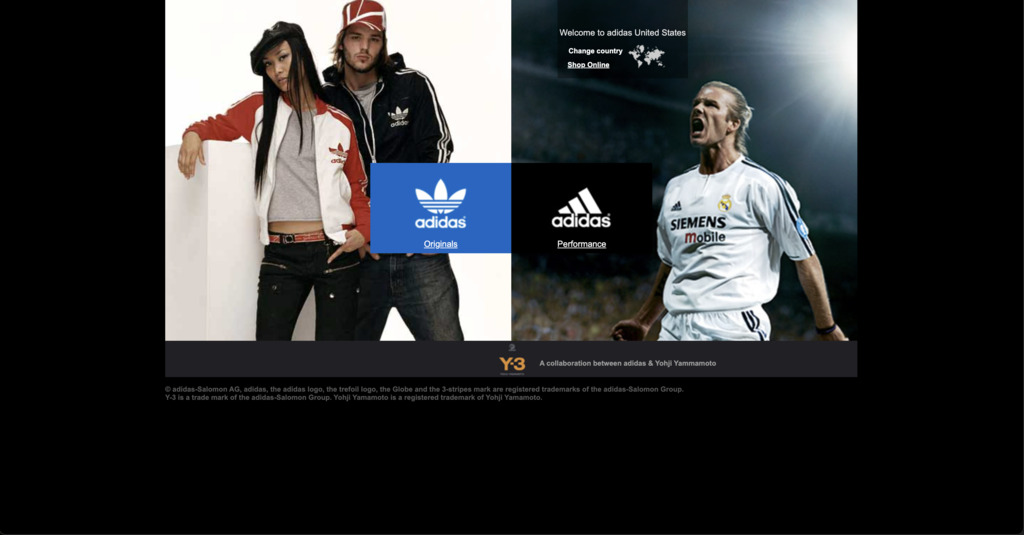
How has Adidas changed over time
Introduction
Adidas has come a long way from its early days as a sportswear manufacturer in Germany. Over the decades, the brand’s approach to marketing has shifted dramatically, evolving from traditional advertising methods to a digital-first strategy.
This article explores Adidas' transformation through snapshots of its website over the years, showing how its marketing approach adapted to changing trends, technologies, and consumer preferences. By examining key moments in Adidas' history, we’ll see how the brand has built and maintained its place in the sportswear industry.
Olympic Games sponsorship in 2004
In 2004, Adidas extended their sponsorships and partnerships with major sports teams and events, including signing an agreement with the Olympic Games. Adidas also secured a deal to provide apparel for the NBA, strengthening its presence in American sports.

At the same time, they introduced technologically advanced footwear designed to enhance athletic performance. This year marked significant growth for Adidas as it positioned itself to compete more directly with Nike in the global athletic apparel market.
New product lines and collaborations in 2012
In 2012, Adidas gained significant attention as the official sportswear partner of the London Olympics, providing uniforms and gear for thousands of athletes and utilizing the event for major brand exposure. Adidas also introduced new product lines, including the Adizero and Climacool, designed to improve athletic performance through lightweight materials and enhanced ventilation.

The brand continued to expand its influence in soccer around the world by releasing new designs for club and national teams. Additionally, Adidas collaborated with designer Jeremy Scott to release bold and unique streetwear collections, blending sportswear with high fashion. These initiatives contributed to a strong year for Adidas in terms of both visibility and sales growth.
Sustainability initiatives and collaborations in 2018
In 2018, the company focused heavily on sustainability and technology, launching eco-friendly initiatives, such as producing shoes made from ocean plastic in collaboration with Parley for the Oceans. They also released products with Boost and Primeknit technology to improve athletic footwear performance.

The brand saw success with its streetwear and high-fashion collaborations, including partnerships with the rapper Kanye West for the Yeezy line and Stella McCartney. Additionally, Adidas expanded its presence in major sporting events, outfitting teams for the FIFA World Cup and launching limited-edition products tied to the tournament. These efforts reinforced Adidas’s role in both sports and lifestyle apparel.
COVID-19 and digital focus in 2020
In 2020, Adidas following the challenges posed by the COVID-19 pandemic, focused on digital growth and online sales to offset store closures worldwide. The company continued its efforts on sustainability, announcing plans to produce more eco-friendly products, such as their "Primeblue" and "Primegreen" lines, made with recycled materials.

Adidas also continued its partnership with Beyoncé, expanding the Ivy Park collection, which saw demand and brought fresh attention to the brand's athleisure offerings. Furthermore, Adidas renewed its focus on social initiatives, pledging support for Black communities and committing to increase diversity within the company.
Parterships and tension with Kanye West in 2022
In 2022, the company faced both successes and significant challenges. The brand continued to emphasize sustainability, introducing more eco-friendly materials across its product lines and expanding its collaborations with organizations like Parley for the Oceans. Adidas also launched new iterations of its popular Yeezy line with Kanye West; however, tensions arose between the two parties over creative and operational differences, culminating in Adidas ending its partnership with West later in the year.

Additionally, Adidas saw growth in its athletic partnerships, signing deals with prominent athletes and expanding its presence in women’s sports. The year highlighted Adidas's efforts on technology and social responsibility.
Summary
Adidas' marketing ventures shows how much the brand has adapted to keep pace in challenging industry. The shifts in its website and online presence highlight Adidas' efforts to staying relevant to new generations of consumers and responding to emerging trends.
By transforming its approach to storytelling and customer engagement, the company attempted to retain its position, connecting with audiences and maintaining its market share in a digital first world.
Andreas Tzionis
—
18/11/2024